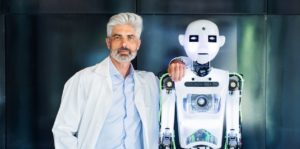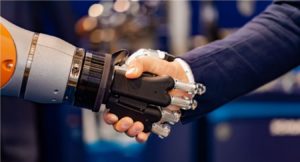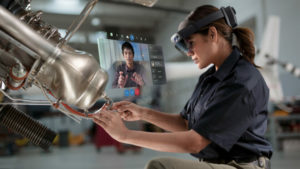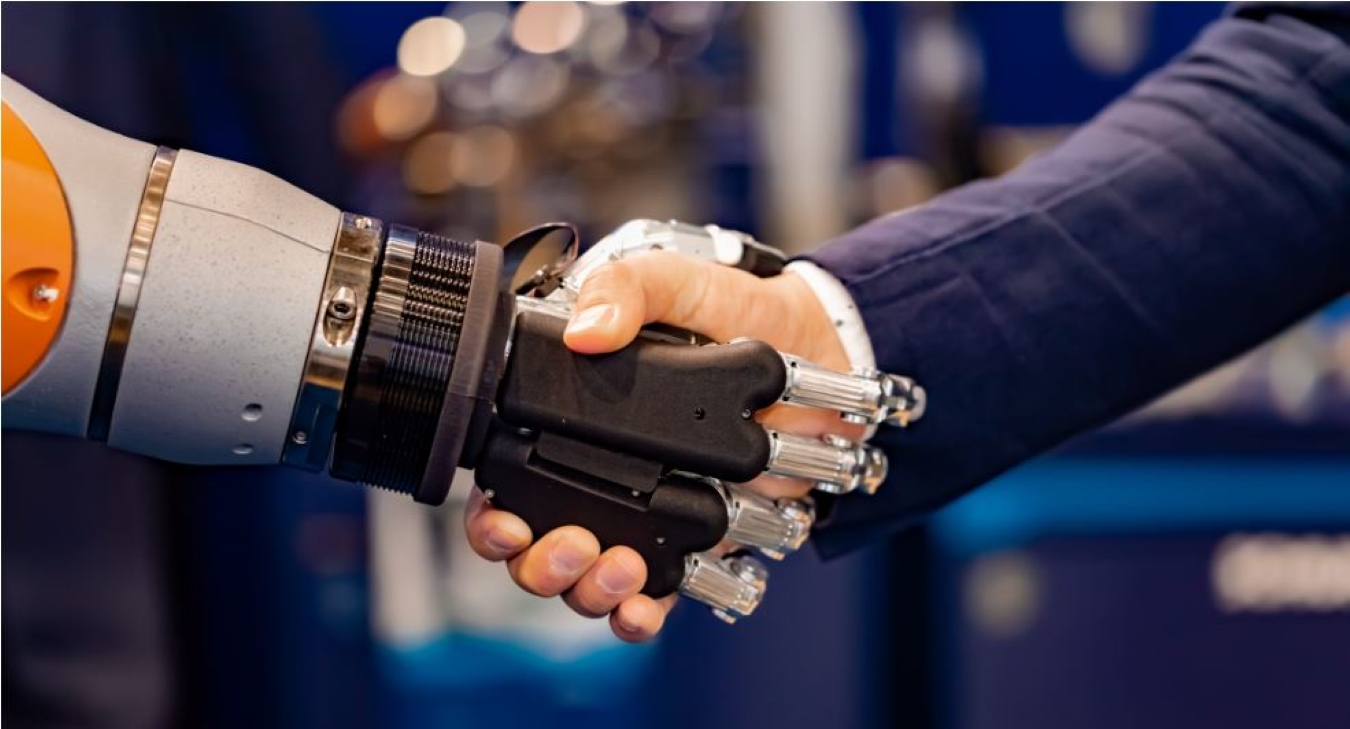On this site, we talk a lot about future jobs: roles such as data analyst, and machine learning engineer, which are likely to be high demand in the future economy. Likewise, we often talk about working online, and how more and more jobs are likely to be remote.
But all this could be moot if those jobs are replaced by robots and computers! Job automation is a very real threat and one that we all need to face.

Pulling insights from large data sets is the perfect fit for an AI. Designing websites isn’t too much of a stretch either. And there are already programs that are building apps.
And it’s not just future “techy” jobs that are at risk either! AI and job automation pose very real threats to mechanics, writers, shelf stackers, checkout-assistants, bar staff, factory workers and countless other job roles. And just maybe, your job too!
25% of jobs in the US are in danger of being replaced in the next decade, according to research conducted by the Brookings Institution.
In this post, we’ll take a look at whether your job is safe from the rise of the machines, or whether you’re about to become obsolete.
Table of Contents
Job automation: the stats
A 2017 report conducted by the Office for National Statistics in the UK, found the following jobs to be at the highest risk of becoming redundant:
- Waiters (73%)
- Shelf fillers (72%)
- Elementary sales occupations (71%)
- Bar staff (71%)
- Kitchen and catering assistances (69%)
This makes sense when you consider that self-checkout systems are already in wide use. This has already reduced the number of jobs available and is a prime example of job automation. Self-checkout systems allow more customers to checkout more quickly, thus increasing turnover for the business and convenience for the shopper.
Machines that work in warehouses are also common, with computer vision having reached the point where it’s able to find and retrieve specific packages without incident. Factories already use machines in assembly lines, and these are getting smarter all the time. 3D printing leaves very little left that can’t be made by a group of machines.
[quotenew qtext=”The greater the output per minute, the more damage a single error can make.” qposition=”center” qcolor=”color3″]
Currently, humanity’s saving grace is the risk that automation and force multipliers pose. The greater the output per minute, the more damage a single error can make. That’s why we need humans to man these systems. But as errors become less common, and as machines get better at checking their work, this last vestige will be eroded too.
The safest jobs
So which jobs were considered safest? Predominantly: highly skilled positions with multiple different components. The same report suggested a more positive outlook for the following roles:
- Dental practitioners (21%)
- Secondary school teachers (21%)
- Senior professionals in education (21%)
- Higher education teachers (20%)
- Medical practitioners (18%)
If your job is on this list, then you can breathe a sigh of relief. But notice that even in the best-case scenario, you’re still somewhat at-risk!
The other type of work that is traditionally considered to be more resilient against the automation of jobs is that which requires “soft skills.” Soft skills are people skills, such as bedside manner, empathy, and childcare.

Rise of the Robo-doctors
[quotenew qtext=”A robot surgeon has perfectly steady hands, never gets tired, and has a microscopic vision.” qposition=”center” qcolor=”color3″]
You may be wondering how job automation could affect a doctor. After all, this is significantly more complex work than stacking shelves.
The problem is that a machine doesn’t need to entirely replace you for your job to be at risk. As long as the automation makes your job easier or faster, then it reduces the number of staff necessary – which makes you less safe.
Many aspects of medical professions are falling to the efficiency of machines. For instance, deep learning algorithms are now able to detect cancerous skin lesions more accurately than human doctors. In one study, the AI was able to identify melanomas with a 95% efficiency, whereas the human participant only managed 86.6%.

Right now robots like the “Da Vinci” from Intuitive Surgical are being used to handle complex surgery. 5,000 robots were put to use in over 1 million surgical procedures in 2018, and this number is growing.
A robot surgeon has perfectly steady hands, never gets tired, and has a microscopic vision.
Even the soft-skill set of Nurses and Doctors is being devalued thanks to the appearance of robots with bedside manners that can be used to identify symptoms, check-in on patients, and even offer an element of comfort.
To begin with, robots and AIs could help an overstretched healthcare industry to cope with the increasing demands of an aging population. But how long until these efficient systems mean that we need fewer doctors, nurses, and surgeons?
Data-driven creativity
You may be wondering where artists and musicians fit into all this. Creative jobs have traditionally been seen as the sole remit of human minds, and yet even those professions aren’t fully safe.
Human artists, writers, and musicians all have the potential at least to be supplanted. Algorithms are getting to the point where they’re able to create beautiful works of art that accurately mimic the styles of famous painters. AIs can write music too, with albums such as Genesis by Ava being the proof. It turns out that music critics are unable to tell the difference between music like this and music composed by humans. Procedurally generated music is something that game designers have been using in particular.

The scary thing is that once you write an AI that can compose music in different genres, there is nothing to stop it from releasing a thousand songs a second.
Writers are likewise in danger. The Associated Press has been using AI to cover Minor League Baseball games for years. And we can extrapolate from that that presenters and sports commenters might be in trouble too. More complex topics are more difficult for AIs to write about authentically, but technology is improving all the time.
Again, the impact this could have would be huge. Imagine an internet that is flooded with computer-generated content. How would you know what to trust? Or where to evens tart?
[quotenew qtext=”The Associated Press has been using AI to cover Minor League Baseball games for years.” qposition=”center” qcolor=”color3″]
More at risk are designers. Web design, product design, and other forms of graphic design lend themselves well to a data-driven approach. The most design has a purpose: whether that is to streamline interaction, or to encourage the user to take a certain step (such as clicking “buy.”) AIs can look at which elements result in the desired outcome and then adjust layouts and color schemes accordingly.
More jobs that are at risk
Just about every other career faces similar challenges from job automation. Administrators and secretaries are being replaced all the time. In a few years, Google Duplex will be able to call up a venue and book a conference room by speaking directly with the customer service representative just as you or I would. Or perhaps it will simply interface with another assistant, kept by the venue.
Chatbots are rife on the web, and quickly reducing the need for human support staff.
Programmers need to keep their eyes on programs that write programs. SketchAdapt is one such tool that can compose short programs using a combination of pattern-matching machine learning algorithms and symbolic reasoning. Bayou is another example that can solve coding problems – a skill is learned by reading Github!
How to keep your job in the AI future
If you want to know what steps you can take right now to become futureproof against AI job automation, the answer is to continue to train and develop yourself.
Most AI today falls into one of two categories:
- Weak AI
- Machine learning
Weak AI is also called “narrow AI” and refers to artificial intelligence that has been built to perform a specific task. That’s why we have AIs that are capable of making music, and AIs that are capable of handling complex surgery. What we currently lack are AIs that can perform surgery and also play the violin – a feat that is slightly less uncommon in humans.
[quotenew qtext=”What we currently lack are AIs that can perform surgery and also play the violin.” qposition=”center” qcolor=”color3″]
Such an AI would likely be what’s known as a “General AI” such as DeepMind. This is an AI designed to be able to learn anything it applies itself to, much like a human brain. Most experts agree that we’re a long way away from a true general AI, however.

And thus, to continue to thrive against the robot competition, it makes sense not to specialize. As a jack-of-all-trades, you’ll be able to bring to the table a set of varied skills and experiences that only a malleable human brain could attain.
Meanwhile, seeing as AIs have a harder time with skilled jobs, you should also seek to continue your education. Degrees and certifications will set you apart more than ever before, so make life-long learning a priority.
What does the future of job automation look like?
While this might all sound scary, it may offer some comfort to remember that we’re all in the same boat. A huge paradigm shift is on the way and we’re all going to have to adapt. The way we do that is by learning to define ourselves in other ways.
And there are a lot of positives associated with job automation. It is estimated that AI will boost the global economy by a huge $15 trillion in just 10 years.
This may well help governments to afford solutions such as universal basic incomes. That is to say that there may well be a time when far fewer of us need to work.
What do we do then?
